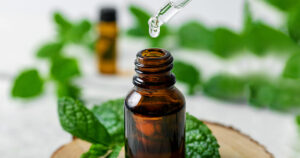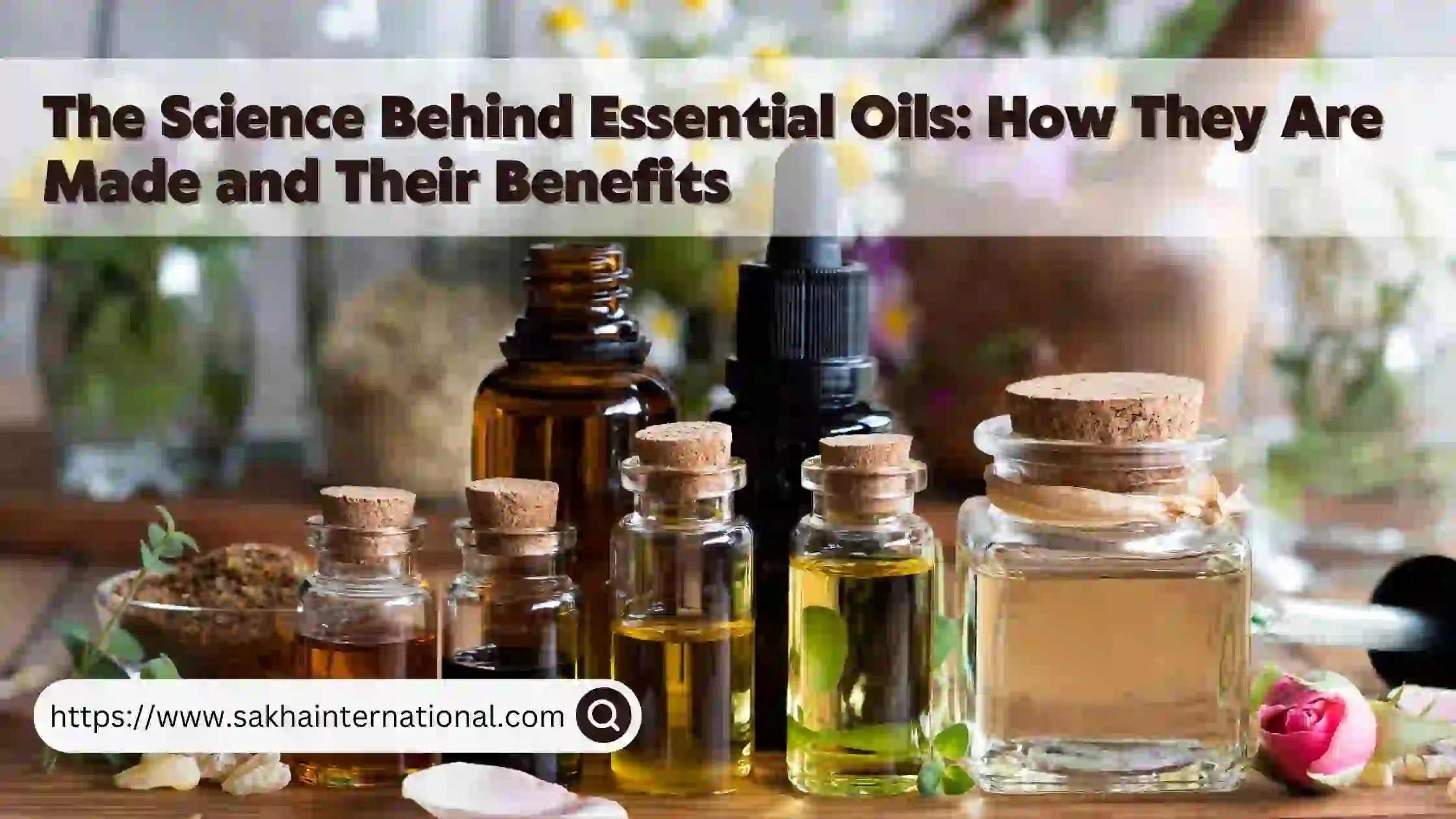Science Behind Essential Oil & their benefits.
For centuries, essential oils have captivated humanity with their alluring aromas and perceived therapeutic properties. From the fragrant offerings in ancient temples to the meticulously crafted aromatherapy diffusers adorning modern homes, these concentrated plant extracts have woven themselves into the fabric of various cultures. But what exactly are essential oils, and how does science explain their potent effects? This comprehensive blog delves into the fascinating world of essential oils, exploring their extraction methods, chemical makeup, and the scientific basis for their purported benefits.
Essential oils have captivated humanity for centuries, revered for their therapeutic properties, enchanting fragrances, and versatile applications. Derived from aromatic plants through meticulous extraction processes, these oils embody the essence of nature’s healing power. Join us on a journey through the science behind essential oils, unraveling their production methods, and exploring their myriad benefits in skincare, aromatherapy, and holistic health.

A Fragrant Journey: Demystifying Essential Oils

Essential oils are the volatile, highly concentrated liquids captured from various plant parts like flowers, leaves, seeds, bark, and roots. These aromatic essences capture the very “essence” of a plant, containing its distinctive scent and a complex blend of active chemical compounds. Unlike carrier oils, which are vegetable oils used to dilute essential oils for topical application, essential oils are not fatty and readily evaporate at room temperature.
Unveiling the Art of Extraction: Methods and Techniques

- Steam Distillation: This age-old method involves passing steam through plant material, causing the essential oil to evaporate. The steam-oil mixture is then condensed, separating the aromatic oil from the water. It is a gentle process suitable for delicate flowers and leaves, yielding high-quality oils like lavender and rose.
- Expression or Cold Pressing: Primarily used for citrus fruits, this method involves mechanically pressing the rinds to release essential oils. It preserves the oil’s natural fragrance and is favored for oils such as lemon, orange, and grapefruit.
- Solvent Extraction: Utilized for plants with low oil content or those whose delicate compounds cannot withstand steam distillation, solvent extraction involves using solvents like hexane to extract essential oils. The resulting mixture is then separated, leaving behind the pure oil. This method is employed for jasmine and tuberose oils.
- Carbon Dioxide (CO2) Extraction: Known for preserving more delicate plant compounds than steam distillation, CO2 extraction uses carbon dioxide under high pressure and low temperatures to extract essential oils. It yields oils with superior fragrance profiles and is ideal for botanicals like hops and frankincense.
A Symphony of Molecules: The Chemical Composition of Essential Oils

Essential oils are a complex blend of numerous organic compounds, each contributing to the oil’s unique aroma and therapeutic properties. The primary class of compounds responsible for the characteristic scent of essential oils are terpenes and terpenoids. These aromatic hydrocarbons can be further classified into various subgroups, such as monoterpenes (known for their invigorating and stimulating effects) and sesquiterpenes (often associated with calming and grounding aromas).
In addition to terpenes, essential oils may contain other bioactive compounds like:
- Esters: These molecules contribute to the floral and fruity notes of many essential oils. They can also possess anti-inflammatory and analgesic properties.
- Alcohols: These compounds can be antiseptic and contribute to the fresh, clean scents of some essential oils.
- Aldehydes: These molecules are known for their sharp, pungent aromas and can have antimicrobial properties.
- Ketones: These compounds often have a camphoraceous or minty scent and can be stimulating and expectorant.
- Phenols: These potent antioxidants are known for their antiseptic and disinfectant properties.
The specific chemical composition of an essential oil depends on various factors, including the plant species, the part of the plant used, the geographical location where it’s grown, and the extraction method employed.
Unlocking the Power: The Science Behind Essential Oil Benefits

The purported therapeutic benefits of essential oils have been a subject of fascination and debate for centuries. While traditional medicine systems have long utilized them for various ailments, modern science is increasingly exploring the mechanisms behind their effects. Here’s a glimpse into the scientific basis for some of the commonly attributed benefits of essential oils:
- Aromatherapy: When inhaled, essential oil molecules travel through the olfactory system, the part of the brain responsible for smell. These molecules can stimulate the limbic system, which regulates emotions, memory, and hormone production. Studies suggest that specific essential oils, such as lavender and chamomile, may promote relaxation and reduce anxiety.
- Topical Application: When diluted and applied topically, essential oils can penetrate the skin and interact with local tissues. For instance, peppermint oil may provide a cooling sensation and temporary pain relief when applied to sore muscles.
- Antimicrobial Activity: Some essential oils, like tea tree oil and oregano oil, exhibit antimicrobial properties. Research suggests they may be effective against certain bacteria and fungi, although more studies are needed to determine their efficacy and safety in various applications.
The Chemistry of Essential Oils

Essential oils are composed of complex mixtures of volatile compounds such as terpenes, esters, aldehydes, ketones, and phenols. These compounds contribute to the unique fragrance and therapeutic properties of each oil. Here are some key components commonly found in essential oils and their benefits:
- Terpenes: These are aromatic molecules that provide antiseptic, anti-inflammatory, and calming effects. Examples include limonene (found in citrus oils) and pinene (found in pine oils).
- Phenols: Known for their strong antimicrobial properties, phenols like carvacrol (found in oregano oil) and thymol (found in thyme oil) help fight infections.
- Aldehydes: These compounds have sedative and antifungal properties. Citral, found in lemongrass and lemon myrtle oils, is an example of an aldehyde.
- Ketones: Ketones can have mucolytic and calming effects. However, they need to be used with caution due to their potential neurotoxicity in high concentrations. Examples include camphor (found in camphor oil) and menthone (found in peppermint oil).
Benefits of Essential Oils

The benefits of essential oils extend beyond their pleasant aroma. They have been used for centuries in traditional medicine and aromatherapy for their therapeutic properties, which may include:
- Stress Relief: Certain essential oils like lavender, chamomile, and frankincense are known for their calming effects, helping to reduce stress and anxiety.
- Antimicrobial Properties: Many essential oils exhibit antimicrobial activity, which can help fight bacteria, viruses, and fungi. Tea tree oil, for instance, is prized for its antiseptic properties.
- Pain Relief: Oils such as peppermint and eucalyptus are commonly used topically to relieve muscle and joint pain due to their analgesic and anti-inflammatory properties.
- Improved Sleep: Essential oils like lavender and cedarwood may promote relaxation and improve sleep quality when used in aromatherapy diffusers or sprays.
Conclusion
Essential oils are not just aromatic substances; they are complex mixtures of bioactive compounds that offer a range of potential health benefits. From their intricate extraction processes to their diverse therapeutic applications, essential oils continue to intrigue scientists and enthusiasts alike. Whether you use them for relaxation, to boost your mood, or to enhance your skincare routine, understanding the science behind essential oils can deepen your appreciation for these natural wonders.
Next time you inhale the scent of your favorite essential oil, remember the science and craftsmanship that went into creating that tiny bottle of aromatic goodness.






Leave A Comment